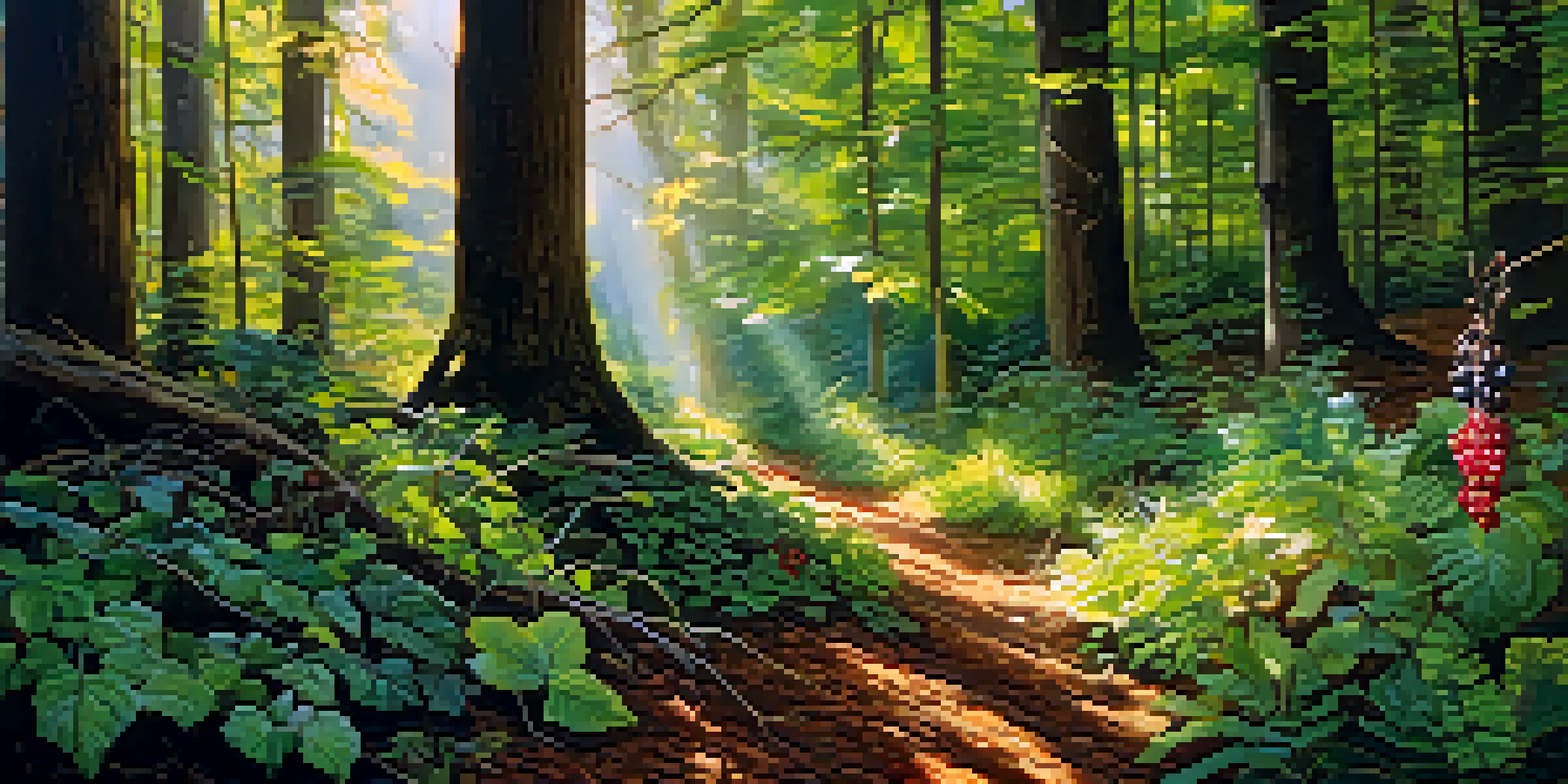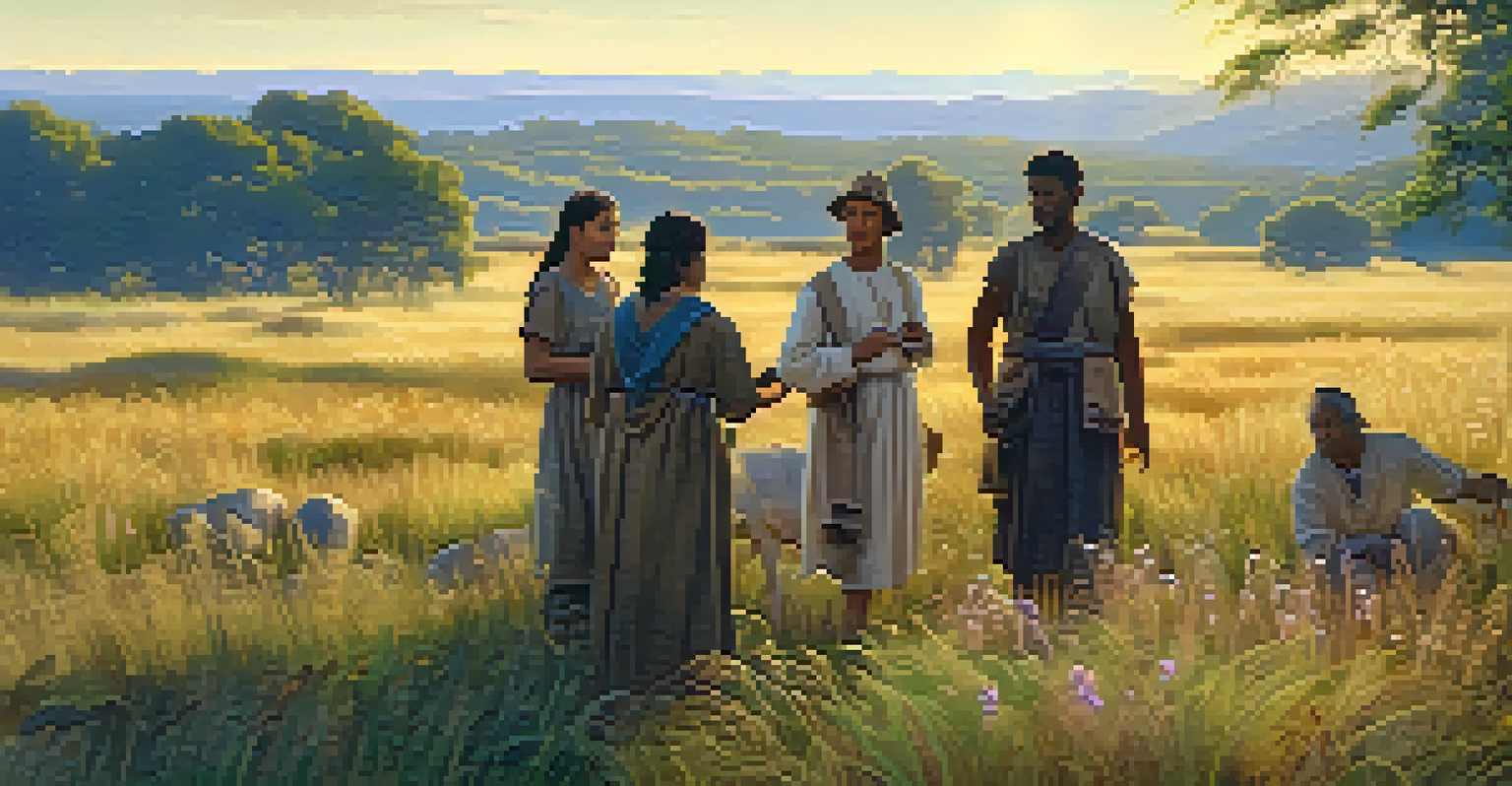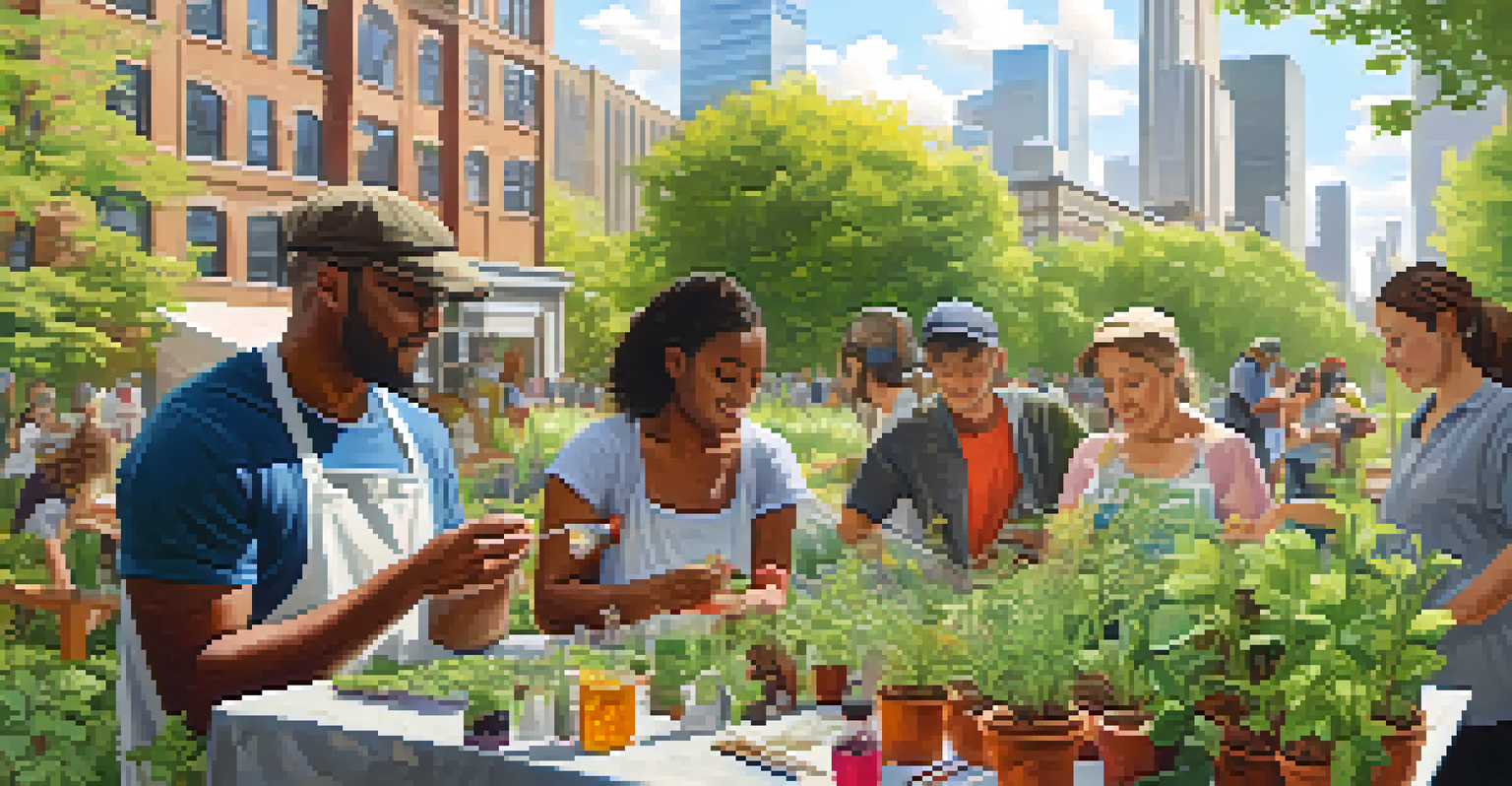The History of Foraging: Food Gathering Through the Ages

Understanding Foraging: The Basics of Food Gathering
Foraging is the act of searching for and gathering wild food resources, a practice that dates back to our earliest ancestors. It encompasses not only the collection of plants but also hunting, fishing, and gathering fungi. Essentially, foraging allowed humans to rely on nature's bounty before agriculture took root, making it a fundamental part of our history.
The act of foraging is an invitation to engage with the natural world, to learn from it and to understand our place within it.
Imagine walking through a lush forest, spotting berries, nuts, and edible greens all around you. This natural abundance provided essential nutrients and energy long before grocery stores existed. For our ancestors, foraging was not just a means of survival; it was an art of observation and understanding of the ecosystem.
Today, foraging is experiencing a resurgence as people seek to connect with nature and understand where their food comes from. This revival reflects a growing interest in sustainability and local food sources, bridging the gap between ancient practices and modern dietary choices.
The Paleolithic Era: Foraging as a Way of Life
During the Paleolithic era, which spanned millions of years, foraging was the primary means of obtaining food. Early humans were nomadic hunter-gatherers, moving with seasonal changes to access various food sources. This lifestyle not only shaped their diet but also influenced their social structures and cultural practices.

These early foragers relied on a diverse diet that included fruits, nuts, roots, and small game. The variety in their diet is thought to have been crucial for their development, enabling the growth of larger brains and fostering innovation. It was a time when survival depended on knowledge of the land and the ability to adapt.
Foraging: A Historic Survival Skill
Foraging has been a fundamental practice for humans, providing essential food resources long before agriculture emerged.
As they roamed, they also developed tools and techniques for gathering and hunting, laying the groundwork for future advancements. The skills honed during this era created a deep bond between humans and their environment, a relationship that still resonates with foragers today.
The Shift to Agriculture: A New Chapter in Food Gathering
Around 10,000 years ago, the advent of agriculture marked a significant shift in human history. As people began to cultivate crops and domesticate animals, the reliance on foraging decreased. This transition allowed for more stable food sources, leading to the rise of permanent settlements and the development of civilization.
Foraging connects us to our ancestors and to the land, reminding us that food is not just a commodity, but a gift from nature.
However, while agriculture provided security, it also introduced new challenges, such as the need for land management and protection against pests. Foraging still played a role, as it supplemented diets, especially in times of crop failure or scarcity. Even early farmers would forage for wild plants and game, blending both practices.
This dual reliance on agriculture and foraging highlights the adaptability of humans in their pursuit of food. It also set the stage for a complex relationship with nature, as societies began to manipulate their environment while still seeking its wild bounty.
Foraging in Ancient Civilizations: A Cultural Perspective
In ancient civilizations, foraging continued to coexist with agriculture, enriching cultural practices and traditions. Societies recognized the value of wild foods, incorporating them into their diets and rituals. For example, the Greeks and Romans celebrated the harvest of wild herbs and mushrooms, highlighting their importance in cuisine.
Foraging also had significant social implications. Communities would gather to forage together, fostering bonds and sharing knowledge. These communal activities were not just about food; they were a means of cultural expression, passing down wisdom from generation to generation.
Cultural Roots of Foraging
Throughout history, foraging has enriched cultural practices and social bonds, showcasing a deep respect for nature.
As civilizations advanced, foraging became intertwined with trade and commerce. Wild foods were sought after in markets, and the knowledge of foraging became a valuable skill, showcasing the deep respect for nature that characterized many ancient cultures.
The Medieval Period: Foraging and Survival
During the medieval period, foraging remained vital, especially among the lower classes who relied on it for survival. With the rise of feudalism, land ownership limited access to cultivated crops, making wild resources essential. People turned to forests, fields, and rivers to gather food and medicinal herbs.
This era also saw the emergence of herbalism, as foragers became knowledgeable about the healing properties of plants. Many communities used foraged herbs for remedies, a practice that was intertwined with folklore and tradition. This connection to nature provided not only sustenance but also a sense of empowerment.
Despite the challenges of the time, foraging thrived, illustrating human resilience and ingenuity. Even as societal structures evolved, the instinct to gather food from the wild remained strong, showcasing the enduring bond between people and the land.
The Renaissance to the Industrial Revolution: A Changing Landscape
The Renaissance brought renewed interest in nature and science, influencing foraging practices. Scholars began documenting edible plants and their uses, leading to a greater appreciation for wild foods. This period also saw the rise of botanical gardens and the classification of plants, blending art and science.
However, the onset of the Industrial Revolution shifted focus from rural to urban living, resulting in a decline in foraging practices. As cities grew, access to natural spaces became limited, and convenience foods began to dominate diets. This urbanization distanced people from the land and the foraging knowledge that had been passed down through generations.
Modern Foraging and Sustainability
The contemporary foraging movement emphasizes sustainability and reconnecting with nature, offering an alternative to processed foods.
Yet, even amidst these changes, some individuals and communities continued to forage, preserving traditions and knowledge. This resilience foreshadowed a revival of interest in foraging that would emerge in the late 20th century, as people sought to reconnect with their roots and the natural world.
The Modern Foraging Movement: Sustainability and Connection
In recent decades, foraging has experienced a remarkable resurgence, fueled by a growing awareness of sustainability and local food systems. Many people are now turning to wild edibles as a way to reduce their carbon footprint and embrace a more natural lifestyle. This modern foraging movement encourages individuals to explore their surroundings and appreciate the bounty of nature.
Foraging workshops, books, and online communities have blossomed, making knowledge more accessible than ever. People share their experiences, recipes, and tips, fostering a sense of community and connection. This revival not only emphasizes the nutritional benefits of wild foods but also highlights the importance of preserving biodiversity.

As we navigate a world often dominated by processed foods, foraging offers a refreshing alternative. It invites us to slow down, engage with nature, and cultivate a deeper understanding of our environment, reminding us of the simple pleasures found in gathering food from the earth.